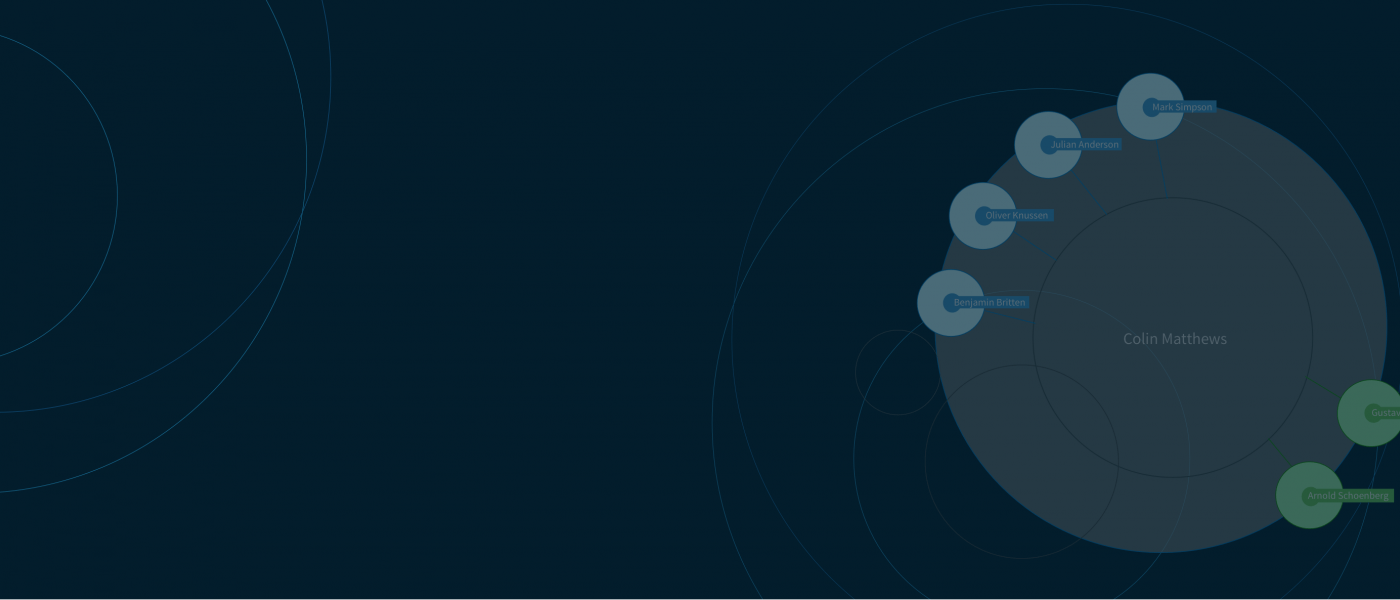The partially heard and the partly known: Lisa Illean on her new album
12th June 2024
Articles NMC RecordingsLisa Illean reflects on her new album with NMC: arcing, stilling, bending, gathering
I’m delighted that my debut album with NMC arcing, stilling, bending, gathering has recently been released. The album draws together four works—commissions from the U.K., Australia and Germany spanning seven years—and features Juliet Fraser + Explore Ensemble, Sydney Symphony Orchestra, GBSR Duo + David Zucchi (with Experimentalstudio des SWR) and members of the Australian National Academy of Music with Emma McGrath, Tilman Robinson and Aura Go. It has been a joy to work with dear friends making this album. Thank you NMC. Thank you, too, for the chance to reflect on these pieces, all of which were something of an experiment, but in hindsight share much in common.
In the programme notes for my 'Tiding' series I write:
“Growing up, I spent countless evenings and early mornings lying on the beach listening to the ocean. And nearly as many hypnotic hours listening to the world sounding through water, my head half-submerged, patterns of distant chattering mingling with the periodic rubbing of the sea.” The partially-heard—the partly known— is a recurring idea in the works collected on this album.

October, 2012: At an exhibition in Jeu De Paume, Paris, I encounter two small films by Sergei Eisenstein. The films capture fleeting reflections in glass shop windows. They are equally mundane, intimate and mesmeric. I begin to imagine music with a similar interplay of collisions and transparent layers.
In arcing, stilling, bending, gathering musical fragments surface in unfolding patterns of convergence. I began by imagining musical lines as infinitely long but only sometimes perceived – just as lines can be imagined extending invisibly beyond the frame of a drawing. I ask for the music to be performed with an intensely quiet focus, forming intermingling transparent sheets of sound. The piece is scored for piano (doubling guitar), an ensemble of 12 string players and pre-recorded sounds (predominantly string quartet samples). The ensemble of 12 strings players is arranged into three string quartets: two of standard instrumentation and a third with a double bass and violins/viola retuned to unique non-tempered tunings. Much of the virtuosity resides in the interaction of five sub-groups within the ensemble, requiring an acute awareness of balance, timing and tuning as each group’s musical fragments surface and recede.
In 'Tiding II (silentium)' musical ideas ‘surface’ in piano, percussion, soprano saxophone and speakers upon precisely calibrated rhythmic layers. While working on this piece I kept an image by Christiane Baumgartner—Deep Water (2013)—on my desk. I like her work very much, and particularly how this image evokes the perception of a liquid form through very precise means. In 'Tiding II' I was likewise aiming to create something aqueous and fluid though subtle details in rhythm and tuning.
The opening of Gerard Manley Hopkins’ poem The Lantern Out of Doors presents a beguiling image of wading light. We know only that the light is produced by a lantern, and that something about its movement is as mesmerising as it is effortful. Hopkins describes his object of contemplation as “winding”: “a lantern passing further and further away and bearing now east, now west of one right line...”. For Hopkins, attentive observations of natural phenomena—both of visible patterns in nature and the act of perception itself—hint at the intangible. Initially composed for and with Juliet Fraser, a through-grown earth sets extracts of Hopkins’ poetry for solo voice, small ensemble and pre-recorded sound to evoke such sensations as the wavering of an unsettled conscience or the branches of an ash tree groping towards a limitless sky.
August 2016: I have two images on my desk: a photograph of my childhood garden extending into bushland (as viewed from our family piano) and another from the Blue Mountains in 2015. The horizons are indiscernible, but the eye seeks nonetheless to reach beyond. My gaze doesn’t settle.
'Land’s End' is a work for chamber orchestra, composed during the autumn of 2015 for Sydney Symphony Orchestra. The atmosphere of 'Land’s End' is indebted to the quiet images of the Latvian-American visual artist Vija Celmins, whose serial “redescriptions” (in graphite, paint and ink) are simultaneously anonymous vistas and meticulous, personal works. The few photographic images she repeatedly reworks—of the ocean surface, desert and night sky— approach abstraction, devoid of perspective and apparently frozen in time. In them is something I recognised: the ungraspable, mysterious quality of the Australian landscape, what Simon Leys has described as “this worndown immensity, with its halferased profiles … a magic space entirely devoid of focal point.”
Like my gaze—like water—the music doesn’t settle. In his programme notes for 'Land’s End', Timothy Munro notes: “Gentle transience is everywhere: harmonies shift glacially, notes barely emerge, notes slide slowly, speeds imperceptibly change.” I’m thrilled to be able to share Sydney Symphony Orchestra’s sensitive realisation of 'Land’s End' on this album.

